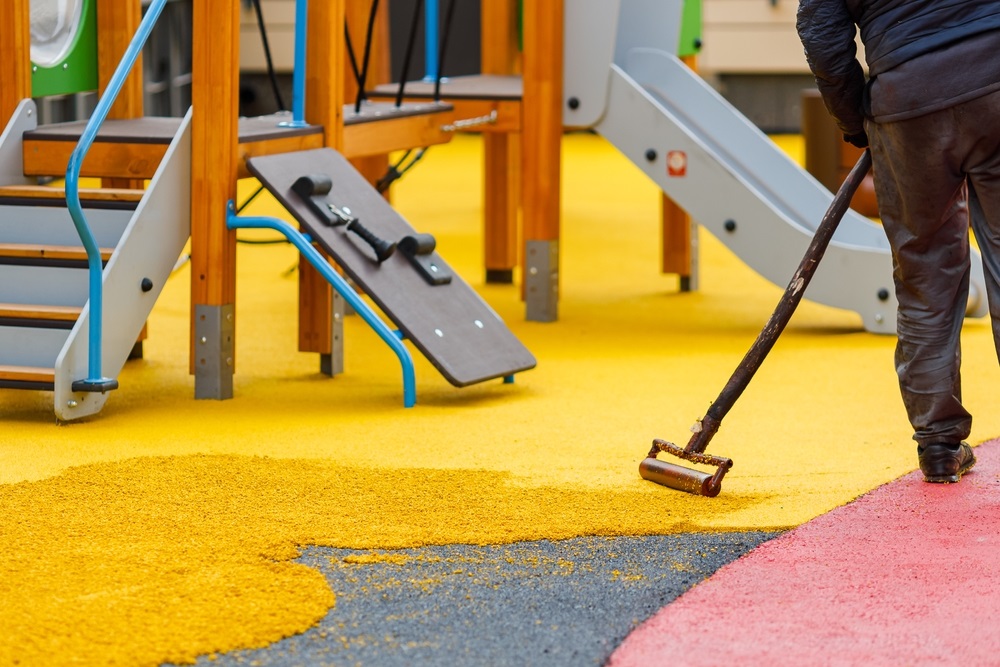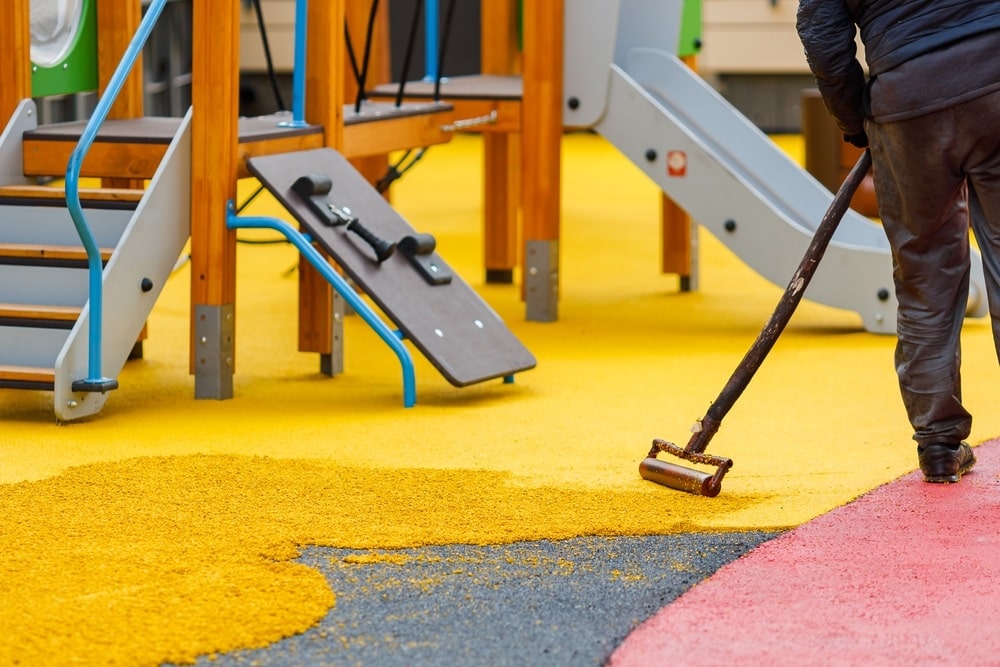Choosing the right surfacing and flooring materials is one of the most important design considerations in a playground. The materials you choose affect so much more than appearance; they affect safety, durability, and ease of maintenance, as well as the entire quality of play. The right playing surface can prevent injuries, withstand heavy use, and lead to a safe and fun environment for the children.
From community playgrounds to commercial playground equipment in Houston, the surface you select can affect how the play area functions and lasts. In this article, we will review the pros and cons of playground flooring materials to help you make your purchase.
Pros of Playground Surfacing and Flooring Materials
Choosing the right type of material that will be used in playground surfaces will have many benefits in aspects of safety, wear resistance, and usability of the place. Here’s a detailed look at the benefits different surfacing options bring to your play area:

Enhanced Safety
Safety in the playground area is also of great importance because proper surfacing materials could prevent certain injuries. Such materials include rubber mulch, engineered wood fiber, and poured-in-place rubber, which absorb high levels of shock, making the surfaces soft and reducing the impact. These are the best options for play areas, having commercial playground equipment in Houston to reduce the risk of severe injuries during play.
ADA Compliance and Accessibility
Some of the playground surfacing materials, like the poured-in-place rubber and rubber tiles, satisfy the requirements of the Americans with Disabilities Act (ADA). This compliance makes it possible to have easy and convenient access to playgrounds for disabled children and other people with such physical difficulties. Some of the surfaces, such as rubber tiles, provide supports that allow wheelchairs and strollers to move on the surface hence providing inclusive play areas easily.
Durability and Longevity
Another important component is the service life of your playground surface. There are materials such as poured-in-place rubber, rubber tiles, and synthetic turf. All are very tough and can easily handle the pressure of foot traffic, harsh climates, and normal use. For example, Playground Surfacing Houston may use rubber tiles or artificial grass, which can be used for about ten years with correct care. This durability invests in playground surfaces long-term cost-effectively.
Aesthetics and Customization
Playgrounds are designed to be fun and colorful. Various choices, such as colored rubber tiles or poured-in-place, can be used to create the desired playground look. They come in different colors and designs that enable one to have specific designs for branding or community association. A playground should be attractive to both children and families. Therefore, colorful surfaces make the playground more attractive.
Environmental Benefits
Some modern surfacing types, such as rubber mulch made of recycled materials, are safe for the environment. The materials used in the construction of these surfaces, such as old tires and other rubber products, are recycled and do not harm the environment. Further, there are natural options, such as engineered wood fiber, which is eco-friendly and degradable compared to synthetic material.
Cons of Playground Surfacing and Flooring Materials
While there are some things to consider when selecting playground surfacing and flooring, these can be controlled through careful planning and proper maintenance, ensuring that you still make a sound investment in your playground.

Initial Costs and Long-Term Value
Premium materials, like poured-in-place rubber, enhance the upfront cost yet provide great safety and high durability to the children while reducing maintenance and repair costs in the long term. In most cases, these materials pay for themselves over time through their resilience and are very useful in high-traffic areas.
Temperature Sensitivity Solutions
Rubber-based surfacing can become very hot in the summer months. To address this, plant trees, canopies, or pergolas to shade it. Keeping the playground cool also keeps it safe for kids. Moreover, lighter shades of surfaces reflect the heat instead of absorbing it, avoiding the temperature issue even more.
Ongoing Maintenance as an Investment
Nevertheless, the loose-fill options—like chips and sand—might require frequent maintenance, which is viewed otherwise as an opportunity to keep the playground at its best. Regular top-ups and leveling ensure the safety criteria are always met, and constant upkeep will extend the life expectancy of the surface area.
Longevity with the Right Materials
Choosing more durable materials reduces the frequency of replacements, increasing their life. This is achievable by choosing more durable materials, such as rubber tiles or poured-in-place rubber. These synthetic solutions offer great longevity at an increased upfront investment, keeping your playground safe and functional for many years.
Conclusion
When it comes to playgrounds surfacing in Houston for a school or community park, there can be two sides to what appears to be the same coin. The best products offer the highest levels of safety and longest life spans, but they also have the highest cost and maintenance. While cheaper options save money initially, such materials usually compromise durability and protection points, thus managing to be less of a risk in the long run.
If you want more professional consultancy and advice, you may contact All Play Inc. for more professional consultation and to learn more about the best playground surfacing to use according to your preference. Allow All Play Inc. to help you design a safe, attractive, and long-lasting play space that children and families can enjoy for many, many years to come!

